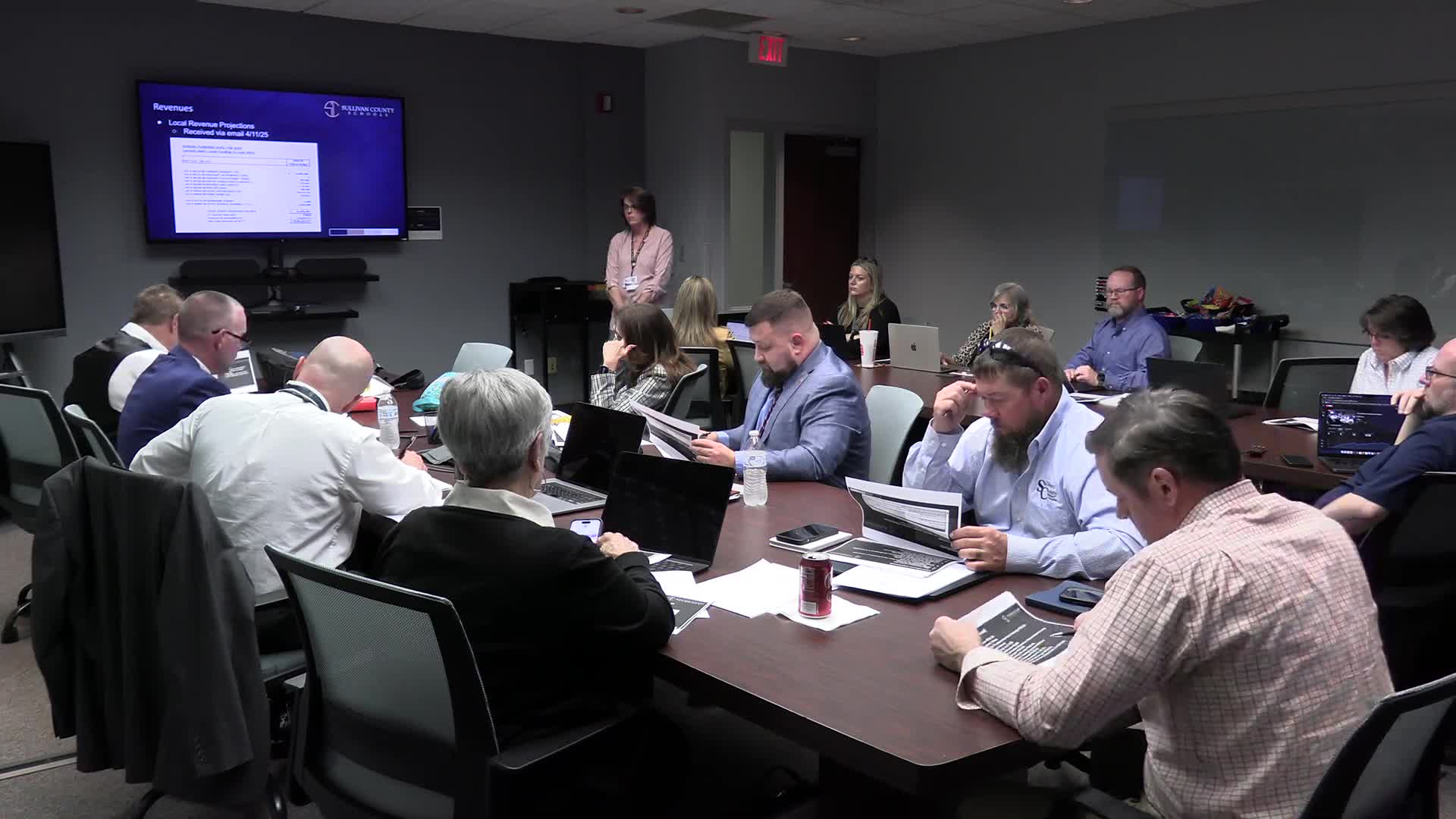Budget discussion highlights shift from property tax to sales tax in school funding
May 08, 2025 | Sullivan County, School Districts, Tennessee
Thanks to Scribe from Workplace AI , all articles about Tennessee are free for you to enjoy throughout 2025!

This article was created by AI using a video recording of the meeting. It summarizes the key points discussed, but for full details and context, please refer to the video of the full meeting. Link to Full Meeting
Board members highlighted that the current property tax revenue stands at $16,684,000, a stark contrast to the $21,633,583 received in February 2020. This decline is attributed to a strategic decision to reduce reliance on property taxes in favor of sales tax, which has increased by approximately 25%. However, board members expressed apprehension about the volatility of sales tax revenue, questioning its reliability for long-term funding.
Concerns were raised about the potential consequences if sales tax revenues were to decrease in the future. Board members noted that while the current funding model may appear beneficial, it poses risks, particularly if economic conditions change. One member emphasized the preference for property tax funding due to its consistency compared to the fluctuating nature of sales tax.
The rationale behind the funding shift was also discussed. It was explained that the change was made to lower the tax rate while addressing a perceived excess in the fund balance. However, some board members argued that this shift primarily benefited the county's general fund rather than the school system, as it allowed the county to avoid raising taxes for its own needs.
Additionally, the meeting touched on the inclusion of planned step increases in the budget, which added $700,000 to the financial considerations for the upcoming year. The board's discussions underscored the ongoing challenges in securing stable funding for education in Sullivan County, highlighting the need for careful planning and consideration of future revenue sources.
As the board moves forward, the implications of these funding decisions will be critical in shaping the financial landscape for local schools and ensuring they can meet the needs of students and staff alike.
Converted from 5-7-25: SCDE Board of Education Work Session meeting on May 08, 2025
Link to Full Meeting
Comments
View full meeting
This article is based on a recent meeting—watch the full video and explore the complete transcript for deeper insights into the discussion.
View full meeting